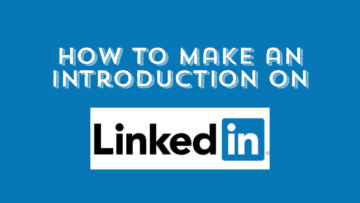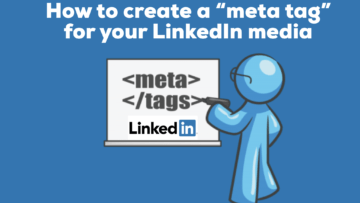Here are six tips for employers to recruit and hire top talent.
Here are six tips for employers who need to know how to attract candidates to recruit and hire top talent especially during the Great Resignation, The Great Reshuffle, The Great Reset, I quit, or whatever you want to call it.
Not too long ago, because of the onset of The Great Resignation, I did a presentation at a Chicago suburbs SHRM (Society for Human Resources Management) chapter called “LinkedIn Tips & Other Strategies for Recruiting & Hiring Top Talent.” Below, I am sharing a few nuggets from my presentation with information that might be helpful to employers.
TIP 1: Why are people leaving their companies to move on? Employers should reflect on reasons to determine the root cause as to why people are quitting.
- Bad bosses
- Better benefits
- Better opportunities
- Child care
- COVID-19 or other health issues
- Eldercare
- Family matters
- Irritating co-workers
- Long commute
- Resistance to return to in-person
- Toxic culture
- Another reason or career break
TIP 2: What are your job descriptions like to read?
- Good title
- Good summary
- Who is the organization? Mission, Vision, Purpose, Corporate Social Responsibility, etc.
- The role – F/T, P/T, hourly, salaried, contract, etc.
- The benefits (medical, retirement, insurance, paid holidays, sick leave, PTO, professional development, education, perks, fun environment, other)
- The team
- The responsibilities vs. competencies
- The ideal candidate
- Do you break it down MUST HAVEs vs. NICE TO HAVEs requirements (education, certification, skills, etc.)
- Compensation (salary range) (Are you following @DanPriceSeattle on Instagram), and are you publishing the salary to not waste time for your company or the job seeker?
- Performance evaluation – what does success look like for the employee?
- Opportunities for growth
- 300 – 700 characters are more manageable for an applicant to read than 700 – 2000 characters with more details
- Bullet points vs. paragraphs written in conversational voice with a friendly and personable approach
- Formatting and spacing
TIP 3: What is the application process?
- Is it fast?
- Is it easy?
- Resume only
- Resume and Cover Letter
- LinkedIn Easy Apply
- Applicant Tracking Systems
- Multiple page online application on the website
- Work samples
- How many interviews are required? (In 2013, I interviewed for one job eight times and did not get it. Should employers be paying people to interview in person, especially with the cost of gas?)
- How many hoops does one have to jump through?
TIP 4: Have you considered these other questions?
- Are you offering a competitive salary?
- Are you updating clients after the interview, or are you ghosting them?
- Have you done a keyword analysis of your job descriptions?
- Have you searched for candidates on LinkedIn using their Talent Solutions platforms?
- Are you searching for candidates by keywords and hashtags such as #ONO #opentowork #remote and phrases like seeking new opportunity or seeking new opportunities that a candidate might happen to put in their profile? Are you using Boolean searches on LinkedIn or Google for the site LinkedIn to find people?
- Are you posting your jobs on job boards, newspaper sites, or just your website?
- Are you contacting job seeker group leaders (like me) and requesting your jobs to be posted to the job seeking members? (Email me director@greatcareersphl.org and let’s talk!) FYI – we are starting a Recruiter on Call with Jobs monthly meeting starting on April 21st.
TIP 5: Are you networking at job seeker events, networking groups, or social audio rooms, or posting and sharing your need to fill roles?
- Chamber of Commerce Events
- Clubhouse, Twitter Spaces, LinkedIn Audio, etc. social audio rooms
- Eventbrite Events
- Industry Events
- LinkedIn Groups
- Linkedin Posts
- Meetup Groups
TIP 6: Are you asking your existing employees for referrals, and are you paying them a bonus for a hired candidate? Here are some 2020 Employee Referral Statistic Highlights from Mike Stafiej:
- Employee Referrals are 4x more likely to be hired
- 82% of Employees rated Employee Referrals above all other sourcing options to yield the best ROI
- $7,500 per hired employee referral is the amount saved in productivity and sourcing costs
- 45% of employees sourced from employee referrals stay for longer than 4 years, and only 25% of employees sourced through job boards stay for over 2 years
- 60 Days was the high end of the average days to fill a position without an employee referral
- Employee Referrals came in at 35 – 40 days, and ERIN Employee Referrals only take 20 days
- $2,500 was the average employee referral bonus in 2019
There is still much more to unpack on this topic, so stay tuned for more!
NEXT STEPS
- Subscribe to my newsletter on LinkedIn for bright ideas to manage your career.
- Join as a member at https://httpsgreatcare.wpenginepowered.com/membership of the #1 business networking association on the Philadelphia Business Journal’s Book of Lists two years in a row! Please note that we changed our website URL recently.
- Register on the events page for these upcoming online events noted below.
- If you need a resume or LinkedIn profile to get you to your next step, book a call to chat!
AUTHOR BIO
Lynne M. Williams is the Executive Director of the Great Careers Network, a volunteer-run 501(c)3 nonprofit organization that provides career education and networking connections for 1) job seekers in career transition, including veterans, and 2) employed and self-employed for career management. She is also the President of ChemPharma.net and runs a Clubhouse session every Friday at 11 AM ET on the Thought Leadership Branding Club.
Aside from writing keyword-focused content for ATS resumes and LinkedIn profiles, Lynne is currently writing her doctoral dissertation on LinkedIn for Job Seekers. She is a contributing author on “Applying to Positions” in Find Your Fit: A Practical Guide to Landing the Job You Love along with the late Dick Bolles, the author of What Color is Your Parachute?, and is also a speaker on career topics.
This article is also published on: vista.today, montco.today, delco.today, bucksco.today, and may also be in the author’s LinkedIn newsletter. A list of articles can also be found in a Google doc.




